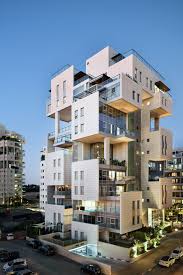Exploring Innovative Building Designs for a Sustainable Future

The Art of Building Designs
Building designs play a crucial role in shaping our environment and enhancing our daily lives. From towering skyscrapers to cozy homes, the architecture and design of buildings influence how we interact with spaces and experience the world around us.
Architects and designers carefully consider various factors when creating building designs. They take into account functionality, aesthetics, sustainability, and cultural influences to craft structures that are not only visually appealing but also practical and environmentally conscious.
One of the key aspects of building design is the layout and spatial organization. Architects must optimize space utilization while ensuring that the building meets the needs of its occupants. Whether it’s designing open-concept office spaces to promote collaboration or creating cozy nooks in a residential home for relaxation, thoughtful spatial planning is essential.
Another important consideration in building design is the use of materials. Sustainable building practices have gained popularity in recent years, with architects opting for eco-friendly materials that reduce environmental impact. From recycled wood and glass to energy-efficient insulation, sustainable materials play a vital role in creating environmentally conscious buildings.
Building designs also reflect cultural influences and architectural styles unique to different regions. Whether it’s the sleek modernism of urban skyscrapers or the traditional craftsmanship of rural cottages, each building design tells a story about its place in the world.
In conclusion, building designs are more than just structures; they are works of art that shape our surroundings and enrich our lives. By considering functionality, aesthetics, sustainability, and cultural influences, architects create buildings that not only stand the test of time but also inspire awe and admiration.
5 Essential Tips for Designing Functional and Eco-Friendly Buildings
- Consider the functionality and purpose of the building.
- Pay attention to natural lighting and ventilation for energy efficiency.
- Incorporate sustainable materials and practices for a more eco-friendly design.
- Ensure proper insulation to improve energy efficiency and reduce heating/cooling costs.
- Think about the surrounding environment and how the building can complement it.
Consider the functionality and purpose of the building.
When embarking on building designs, it is essential to carefully consider the functionality and purpose of the structure. Understanding how the building will be used and what its primary objectives are is crucial in creating a design that meets the needs of its occupants. Whether it’s designing a residential home, a commercial space, or a public facility, prioritizing functionality ensures that the building serves its intended purpose effectively. By incorporating elements that enhance usability and efficiency, architects can create spaces that not only look visually appealing but also provide practical solutions for those who inhabit them.
Pay attention to natural lighting and ventilation for energy efficiency.
When focusing on building designs, it is essential to prioritize natural lighting and ventilation to enhance energy efficiency. By strategically incorporating ample natural light sources and efficient ventilation systems, buildings can reduce the reliance on artificial lighting and air conditioning, leading to lower energy consumption and operational costs. Maximizing natural light not only creates a more pleasant and productive indoor environment but also reduces the carbon footprint of the building. Additionally, proper ventilation helps maintain a comfortable indoor climate while promoting air quality and reducing the need for mechanical cooling systems. Prioritizing natural lighting and ventilation in building designs is a sustainable approach that benefits both the environment and occupants.
Incorporate sustainable materials and practices for a more eco-friendly design.
Incorporating sustainable materials and practices into building designs is essential for creating a more eco-friendly environment. By opting for materials that are renewable, recycled, or environmentally friendly, architects can reduce the carbon footprint of construction projects and promote sustainability. From energy-efficient insulation to reclaimed wood and solar panels, integrating eco-friendly elements not only helps protect the planet but also contributes to healthier indoor environments for occupants. Embracing sustainable practices in building designs is a step towards a greener future for generations to come.
Ensure proper insulation to improve energy efficiency and reduce heating/cooling costs.
Proper insulation is a crucial element in building design to enhance energy efficiency and lower heating/cooling expenses. By effectively insulating a structure, heat transfer is minimized, maintaining a comfortable indoor temperature without over-relying on heating or cooling systems. This not only reduces energy consumption but also decreases utility costs, making the building more sustainable and cost-effective in the long run. Investing in quality insulation during the design phase can lead to significant savings and a more environmentally friendly building design overall.
Think about the surrounding environment and how the building can complement it.
When considering building designs, it is crucial to think about the surrounding environment and how the building can complement it. By harmonizing with the natural landscape, neighboring structures, and overall atmosphere, a well-designed building can enhance its surroundings and create a cohesive and visually appealing environment. Factors such as architectural style, materials used, and placement of windows and entrances should all be carefully considered to ensure that the building not only fits into its surroundings but also adds to the beauty and functionality of the area.
